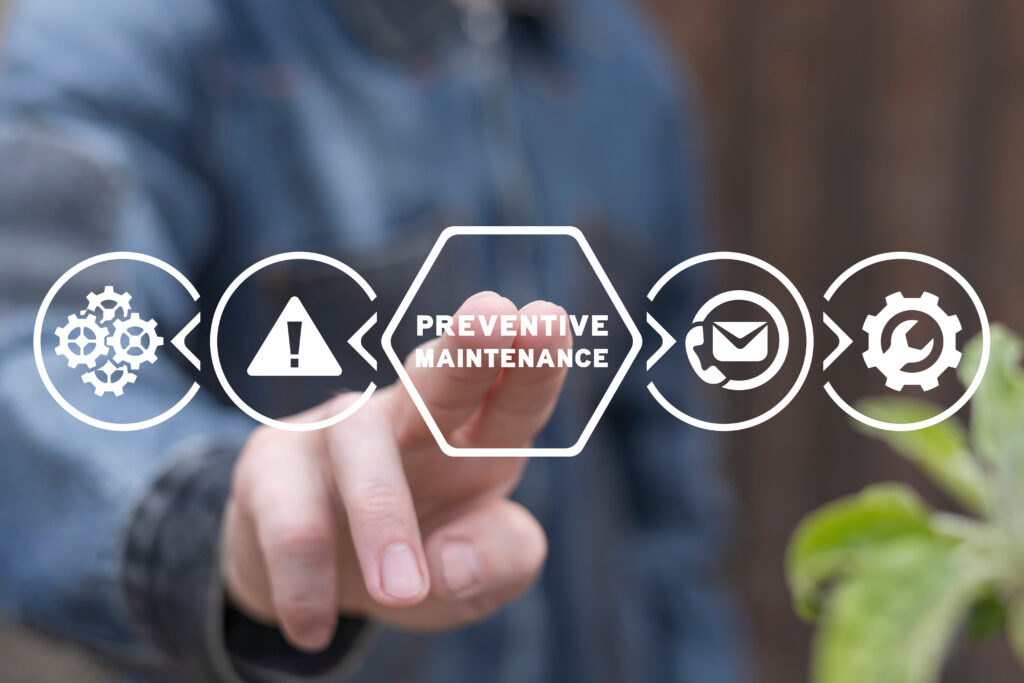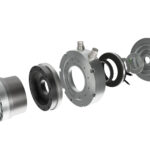By Andy Graham, Solutions Manager, with SolutionsPT.
Preventive maintenance uses regular and routine maintenance in two main ways to avoid unplanned downtime before it happens. At its simplest, it uses time-based maintenance which services critical pieces of equipment at set intervals, regardless of usage levels or circumstances, based on a Mean Time To Failure (MTTF) calculation. The next level of maintenance considers usage and triggers a service after a piece of equipment has completed a certain number of production cycles. While neither of these approaches uses the data intensive Artificial Intelligence (AI) required for predictive maintenance, the second level does require a feed of data from industrial sensors and/or PLCs on machines or lines. A strong preventive maintenance strategy also requires historic records of past inspections and machine performance to best plan what can be a complex schedule.
For manufacturing plants to effectively communicate and manage this data there are multiple options available, each with their own benefits and challenges.
IO-Link for preventive maintenance
IO-Link is a cost-effective, open, point-to-point communications protocol. It is bi-directional so will transmit data/instructions in both directions over a short distance between two separate endpoints or nodes. Very commonplace within industrial settings, IO-Link is often used to communicate with sensors and actuators in factories. These sensors and actuators connect via Fieldbus which enables them to be placed across the facility. All of these edge devices connect to a master device that communicates to an operator.
When looking at this protocol with preventive maintenance in mind, there are several aspects to consider. Firstly, IO-Link is versatile, meaning it is capable of integration into existing systems. It is also fairly simple to install compared to other approaches, including power over ethernet. The point-to-point topology means that with enough data points on the equipment, issues can be detected and communicated in almost real-time. Anyone that has worked in a production facility can testify that responding early to a sensor trigger can be the difference between solving the issue or costly unplanned downtime. The versatility of IO-Link also translates to scalability, a flexible protocol that allows for easy additions of more edge devices as a facility increases production or adds new lines.
For these reasons IO-Link is well positioned to deliver on the requirements needed for a successful preventive maintenance programme.
Power over Ethernet for preventive maintenance
Power over Ethernet (PoE) means that low energy industrial sensors can been installed and take power from network cabling without having to connect to traditional power outlets. This means power can be delivered to areas without needing to install additional electrical infrastructure resulting in reduced installation costs, more flexible and responsive deployments for data-gathering capabilities, and pursuant productivity enhancements. Operators can plug PoE enabled edge devices into existing networks very easily, allowing straight forward integration with legacy hardware.
PoE devices can have a positive effect on ongoing preventive maintenance programmes. By removing the need for electrical cables and access to power points, it is very easy for industrial operators to add new sensors as their needs change, whether this is adding a new production line or adding more data points to a critical piece of equipment.
As with any industrial equipment, operators must ensure safety when connecting to existing infrastructure, so PoE devices that adhere to IEEE 802.3af are required. This adds a ‘handshake’ protocol to PoE devices and establishes how much power the connected device requires. If this handshake isn’t completed the device never receives any power. Following this standard makes PoE technology safe to integrate with all equipment, even those that receive power through a traditional outlet, protecting equipment, assets and people.
Preventive maintenance is an important and proactive strategy; it works to reduce downtime through usage data gathered by connected industrial sensors. The approach is a cost-effective alternative to data intensive Artificial Intelligence and can yield many of the same benefits when it comes to maintenance downtime. The right way to create a preventive maintenance strategy will always vary from enterprise to enterprise. IO-Link is a solid foundation for the strategy and the flexibility of PoE devices means manufacturers can remain agile as the needs of their customers change.
Align your digital transformation and maintenance strategies with with SolutionsPT.








